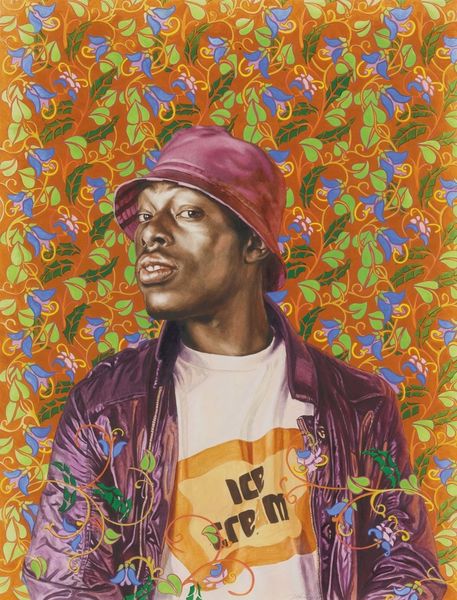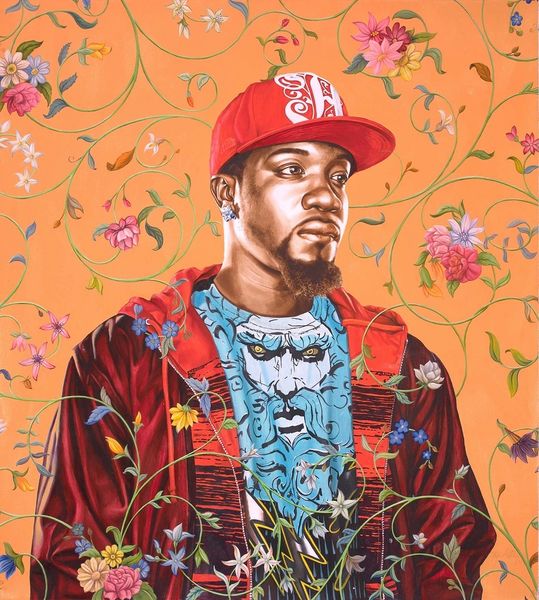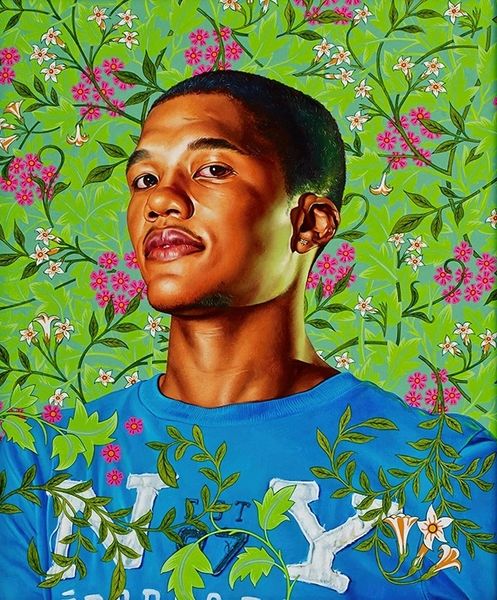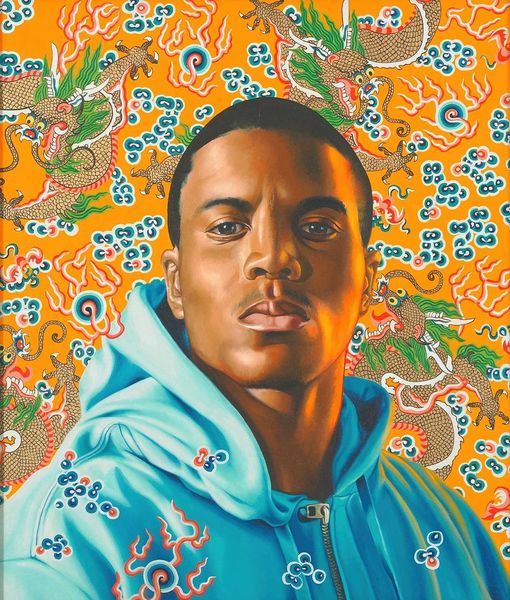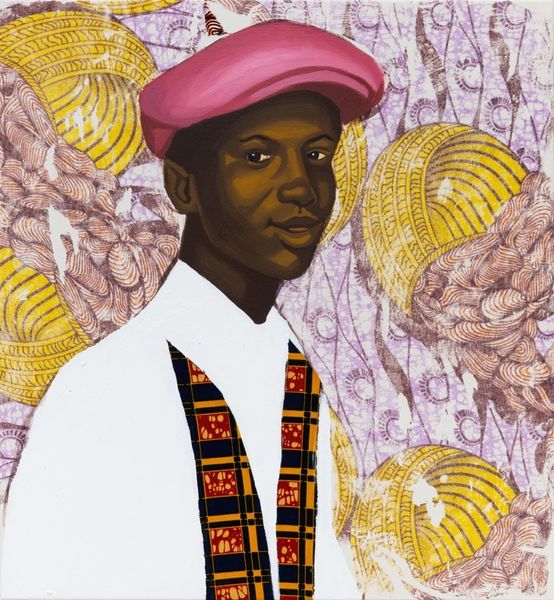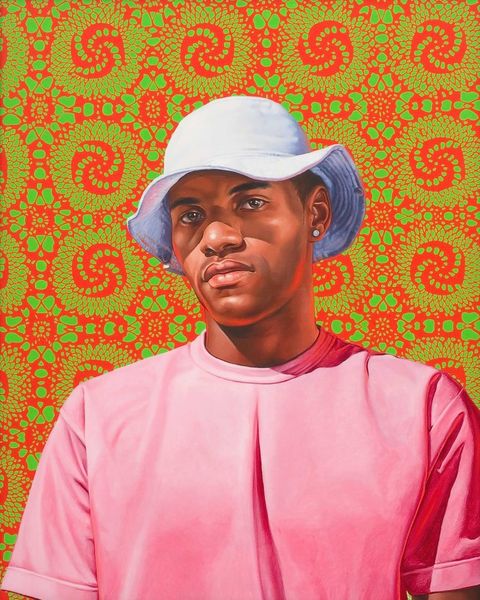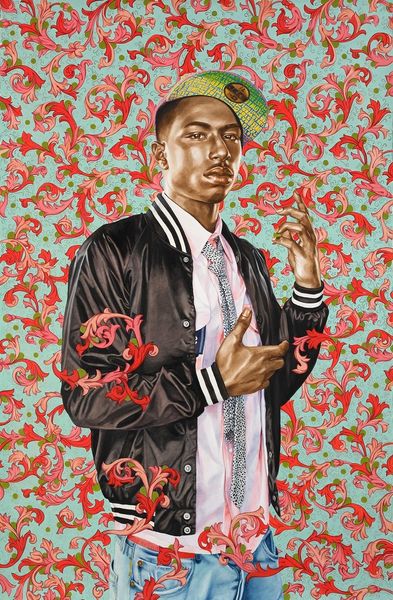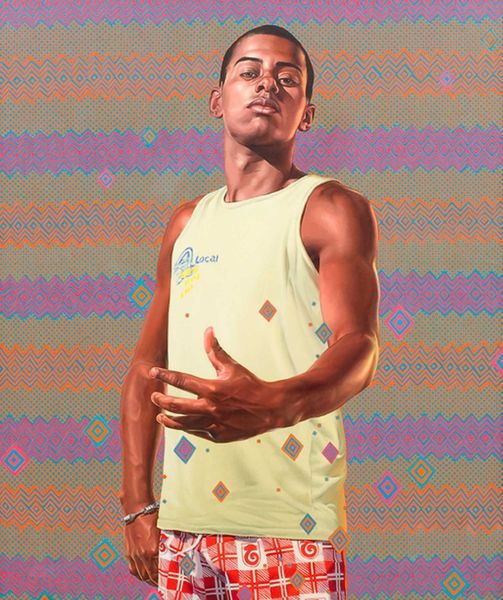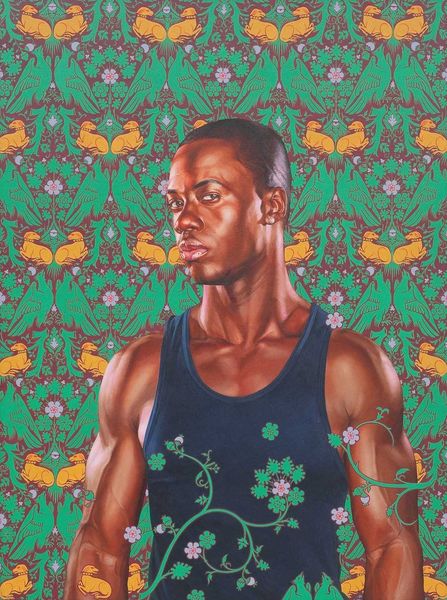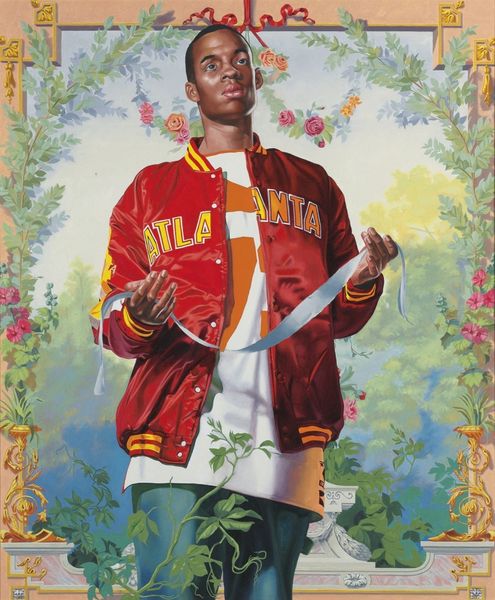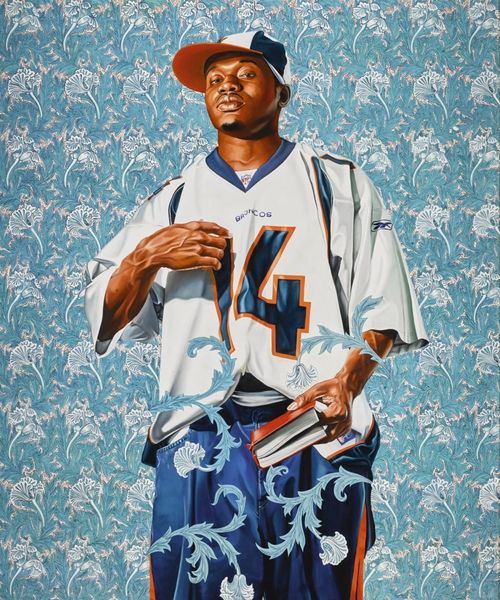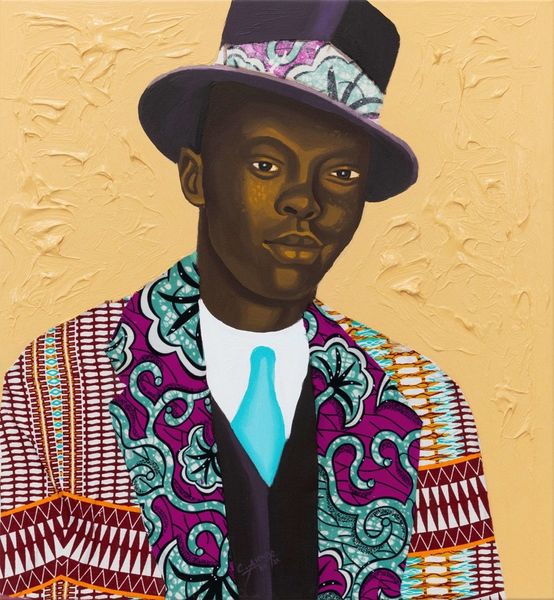
#
pattern-and-decoration
Copyright: Modern Artists: Artvee
Editor: This is "Jerry I" by Kehinde Wiley, an oil painting from 2008. The way the figure pops against that ornate floral background is really striking. What do you see in this piece, particularly regarding its visual language? Curator: Wiley is a master of visual remixing. He consistently uses the language of power, traditionally seen in Western European portraiture, and recontextualizes it with young Black men. What’s interesting here is the explicit use of floral patterns. What do flowers symbolize for you? Editor: Well, they often represent beauty, fragility, or even the ephemeral nature of life, don’t they? But it’s quite a contrast with the figure’s confident pose. Curator: Exactly! It's the inherent tension. The floral background directly references historical fabrics used in aristocratic portraiture, signifying wealth and status. Wiley is actively placing Jerry within this canon. But how does this tension challenge the viewer’s preconceived notions of both portraiture and the individuals represented? Editor: So it's about reclaiming a space and rewriting history. The floral pattern isn't just decorative; it's a symbol with a deeper narrative. The subject’s direct gaze certainly commands attention, defying any sense of fragility suggested by the flowers. Curator: Precisely. He utilizes the vocabulary of classical art, imbued with cultural memory, to make powerful statements about identity, representation, and the enduring human desire for dignity and recognition. Do you think the bright clothing he is wearing distracts or supports Wiley’s vision? Editor: It certainly demands your attention, and pushes this toward pop art influences... I never looked at portraiture this way. Thank you for broadening my view! Curator: My pleasure. It’s through analyzing the accumulation of symbols that we understand how the weight of history shapes our present.
Comments
No comments
Be the first to comment and join the conversation on the ultimate creative platform.
